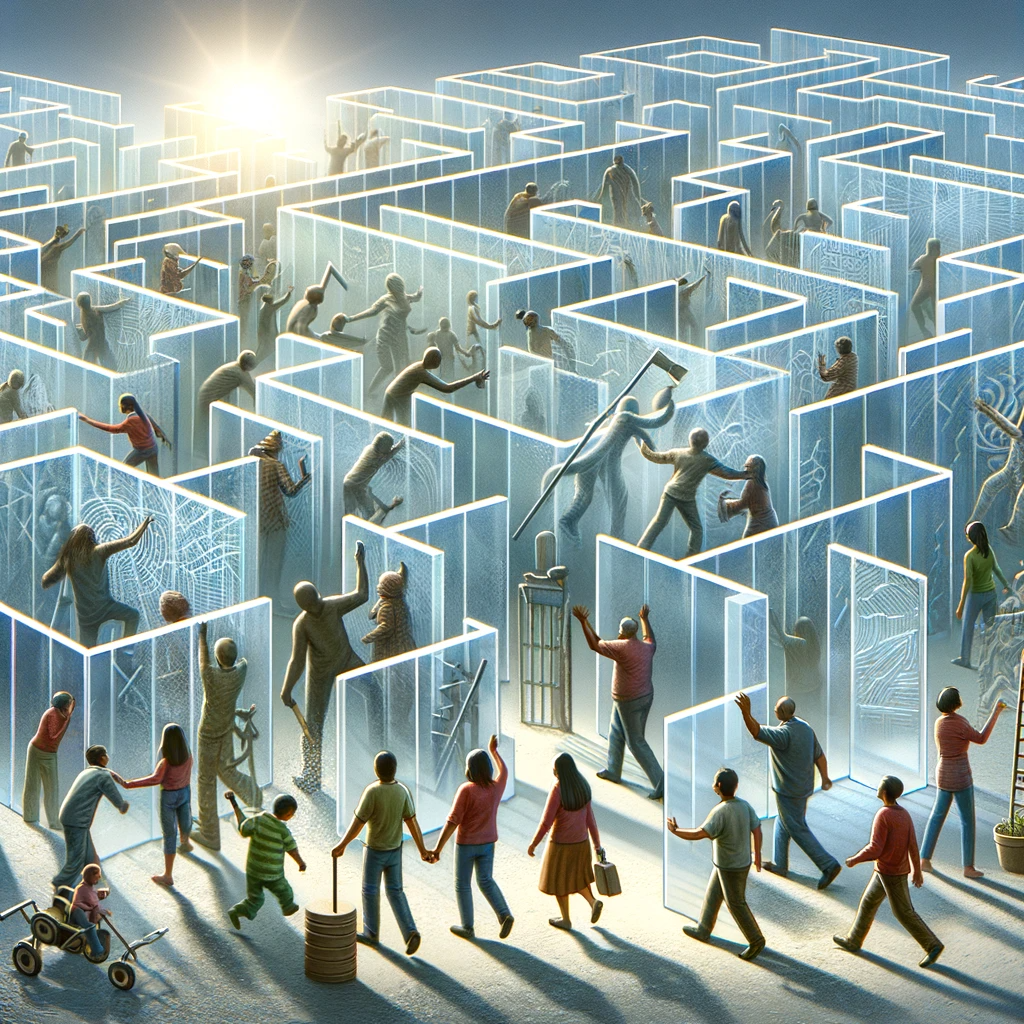Society’s invisible architecture, crafted through a complex matrix of social, economic, and political structures, outlines the pathways available to us. Like any structure, it has doors and windows – opportunities for success. However, many of these passages remain firmly locked for certain sections of society, primarily due to persistent socioeconomic barriers. These barriers not only perpetuate the cycle of poverty but also stifle the efforts of marginalized individuals to achieve upward mobility. This expanded article delves deeper into the unseen walls that contain systemic poverty and the lack of opportunities, all the while shining a brighter light on the relentless struggle to dismantle these barriers.
Expanding Understanding of Socioeconomic Barriers
Socioeconomic barriers are a complex web of factors that impede individuals’ ability to improve their social and economic status. These barriers are not just walls but deep trenches embedded in our social fabric, rooted in historical injustices and perpetuated through systemic inequality. They manifest as limited access to quality education, lack of affordable housing, inadequate healthcare, job market discrimination, the digital divide, and more nuanced elements like social stigma and geographic isolation.
Each barrier is daunting in its own right, but when they intersect, they create an almost impenetrable maze, making escaping poverty an Herculean task. For example, poor educational opportunities lead to underemployment, which in turn limits access to healthcare and nutritious food, further entrenching individuals in a cycle of poverty. This complex interplay of barriers necessitates a multi-faceted approach to dismantle them.
Deepening the Cycle of Poverty
The cycle of poverty is a relentless vortex that begins at birth. Children born into impoverished families are immediately met with disadvantages like poor healthcare and nutrition, impacting their development. As they grow, they face educational disparities due to underfunded schools, diminishing their future earning potential. Adulthood doesn’t bring respite but rather a continuation of the struggle with low wages, insecure employment, and a lack of safety nets, making any financial setback potentially devastating. This cycle doesn’t just repeat; it deepens with each generation, making the climb out of poverty steeper for each subsequent one.

Innovative Strategies for Breaking the Cycle
Despite the grim situation, there’s a wave of resilience and innovation in the fight against these barriers. Individuals are employing creativity, resilience, and relentless effort to carve out better lives. Stories of parents working multiple jobs to fund education or youths turning to entrepreneurship to create jobs illustrate the human spirit’s indefatigable nature.
Non-profit organizations are critical in this battle, providing essential services and acting as bridges over these socioeconomic chasms. They offer not just immediate relief but also long-term empowerment through education, healthcare, legal aid, and more. Their advocacy work is equally vital, pushing for systemic changes that address the root causes of poverty.
Governmental policies and initiatives are pivotal in this landscape. Well-crafted policies targeting income inequality, accessible healthcare, improved education, and affordable housing can significantly alter the socio-economic terrain. Additionally, innovations in policy, like universal basic income or improved access to technology, hold the potential to radically reshape opportunities.
The cycle of poverty and the socioeconomic barriers it entails is a complex but not insurmountable challenge. It calls for a collaborative effort involving individuals, communities, policymakers, and organizations. This journey toward a society of equal opportunities is fraught with challenges but is a testament to human resilience and commitment.
This expanded dialogue seeks not just to illuminate the systemic nature of these barriers but also to inspire collective and individual action towards dismantling them. Understanding the depth and breadth of these barriers is the first step. The next is replacing systemic inequality with systemic opportunity, paving the way for a future where every individual has the key to doors of opportunity.






